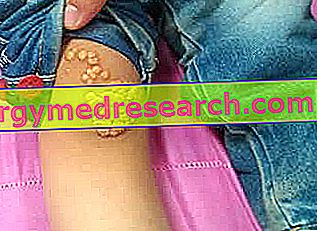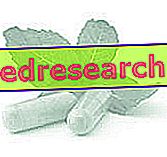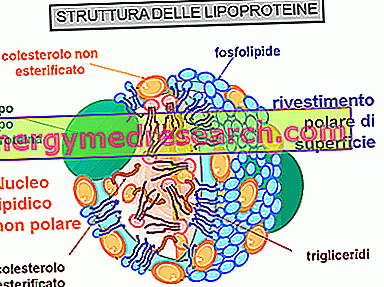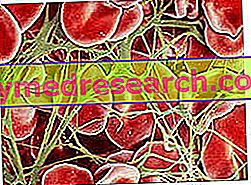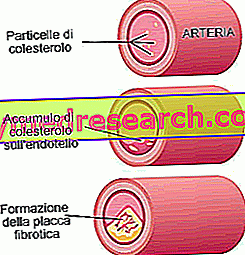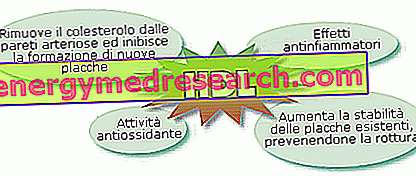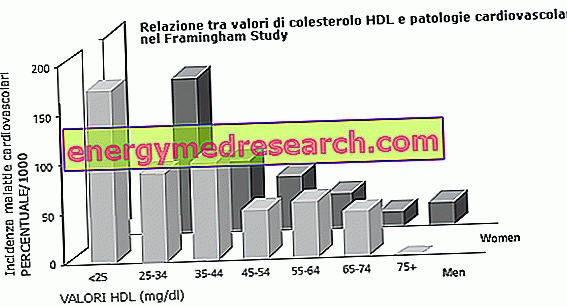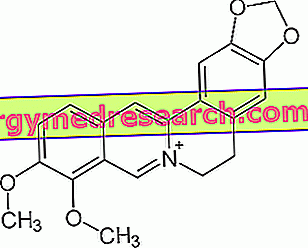Cholesterol and high cholesterol Cholesterol is a steroid lipid of animal origin; it represents both a nutritional component (deriving for 30% of the total from food), and a molecule of endogenous synthesis (deriving for 70% of the total from intracellular production, especially at the level of the liver and intestine)
Category cholesterol
Xanthomas are yellow subcutaneous agglomerates. The sediment consists of an accumulation of macrophages filled with lipid molecules. The xanthomas have a soft consistency, a sharp border and appear just below the skin. Multiple tuberous xanthomas in a pediatric patient. Image from wikipedia.org The diameter varies from a few millimeters to several centimeters
Importance of Lifestyle The first and fundamental corrective approach to lower cholesterol is hygienic-dietetic. For this, the adoption of a healthy and balanced diet - together with abstention from cigarette smoking and the practice of regular physical activity - it must be considered as a real drug
What is Apolipoprotein B? Apolipoprotein B is the main protein component of low-density lipoprotein (LDL or "bad" cholesterol), responsible for transporting cholesterol to tissues. Apolipoprotein B, or more simply APOB, also constitutes about 40 percent of the protein fraction of very low density lipoproteins (VLDL) and chylomicrons (which carry triglycerides of endogenous and exogenous origin)
Cardiovascular Risk Marker In several studies, the ApoB / ApoA1 ratio has been shown to be a more significant cardiovascular risk factor than the classic ratio of LDL cholesterol to HDL cholesterol. For example, in a 2008 study published in the prestigious journal The Lancet *, the ApoB / ApoA1 report presented a very high PAR for acute myocardial infarction, equal to 54% and higher than that of the C-LDL / C-HDL ratio (37%) and the C-total / C-HDL ratio (32%)
Generality Antithrombin III (ATIII) is a protein that helps regulate blood clot formation. A quantitative alteration or dysfunction of this factor increases the risk of thromboembolic phenomena . ATIII deficiency can be congenital (autosomal dominant transmission) or acquired (as in the case, for example, of nephrotic syndrome, estrogen-progestin therapy, disseminated intravascular coagulation, liver failure, etc
Arteriosclerosis - Definition Often, the terms arteriosclerosis and atherosclerosis are used interchangeably as synonyms. In reality, these are two different and not perfectly superposable conditions: the term arteriosclerosis identifies all forms of hardening, thickening and loss of elasticity of the arterial wall, such as atherosclerosis, arteriolosclerosis and calcific sclerosis of Mönckeberg: it is therefore a general term.
What is atherosclerosis? Atherosclerosis is a multifactorial degenerative disease that affects medium and large caliber arteries, inflaming and stiffening them due to the deposition of fat and white blood cells in their wall. These deposits (called atheromas or atherosclerotic plaques) are deposited in the innermost layer of the arteries, the one in direct contact with the blood
Generality Cholesterol associated with so-called high density lipoprotein or HDL (High Density Lipoprotein) is considered "good". The reason is simple: instead of accumulating in the blood like the "bad" (LDL), the fraction of HDL cholesterol travels to the liver to be properly disposed of
Benefits of physical activity If well structured, physical activity has been shown to reduce VLDL levels, hence plasma triglycerides, and increase HDL levels, hence good cholesterol. The ability to reduce LDL lipoproteins (bad cholesterol) appears less certain; consequently, if the HDL values increase but the LDL levels remain more or less stable, overall the total cholesterol may increase slightly. It
What is Berberine? Berberine is a vegetable alkaloid particularly active in the reduction of cholesterolemia. This substance - with a bitter taste and an intense yellow color - is present in the bark, roots and stems, including underground ones (rhizome), of plants belonging to the genus Berberis, such as barberry ( Berberis vulgaris L


